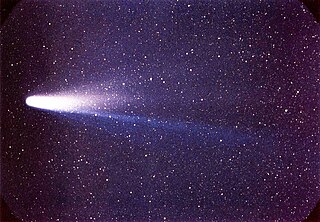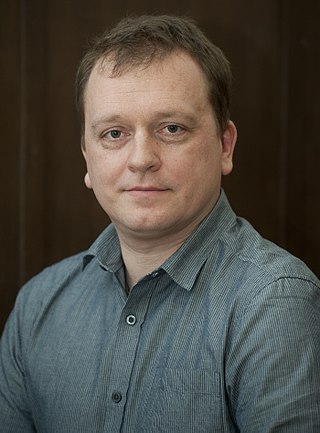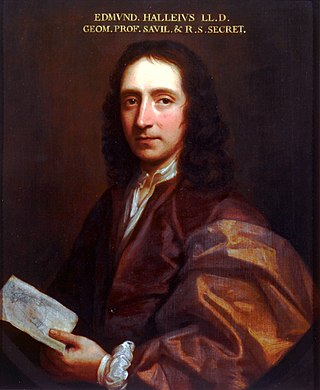Aegospotami or Aegospotamos is the ancient Greek name for a small river issuing into the Hellespont, northeast of Sestos.

In precise timekeeping, ΔT is a measure of the cumulative effect of the departure of the Earth's rotation period from the fixed-length day of International Atomic Time. Formally, ΔT is the time difference ΔT = TT − UT between Universal Time and Terrestrial Time. The value of ΔT for the start of 1902 was approximately zero; for 2002 it was about 64 seconds. So Earth's rotations over that century took about 64 seconds longer than would be required for days of atomic time. As well as this long-term drift in the length of the day there are short-term fluctuations in the length of day which are dealt with separately.

Astronomy is the oldest of the natural sciences, dating back to antiquity, with its origins in the religious, mythological, cosmological, calendrical, and astrological beliefs and practices of prehistory: vestiges of these are still found in astrology, a discipline long interwoven with public and governmental astronomy. It was not completely separated in Europe during the Copernican Revolution starting in 1543. In some cultures, astronomical data was used for astrological prognostication.

Tidal acceleration is an effect of the tidal forces between an orbiting natural satellite and the primary planet that it orbits. The acceleration causes a gradual recession of a satellite in a prograde orbit, and a corresponding slowdown of the primary's rotation. The process eventually leads to tidal locking, usually of the smaller body first, and later the larger body. The Earth–Moon system is the best-studied case.

Halley's Comet, Comet Halley, or sometimes simply Halley, officially designated 1P/Halley, is a short-period comet visible from Earth every 75–79 years. Halley is the only known short-period comet that is regularly visible to the naked eye from Earth, and thus the only naked-eye comet that can appear twice in a human lifetime. It last appeared in the inner parts of the Solar System in 1986 and will next appear in mid-2061.

The following is a timeline of Solar System astronomy and science. It includes the advances in the knowledge of the Earth at planetary scale, as part of it.

The Crab Nebula is a supernova remnant and pulsar wind nebula in the constellation of Taurus. The common name comes from a drawing that somewhat resembled a crab with arms produced by William Parsons, 3rd Earl of Rosse, in 1842 or 1843 using a 36-inch (91 cm) telescope. The nebula was discovered by English astronomer John Bevis in 1731. It corresponds with a bright supernova recorded by Chinese astronomers in 1054 as a guest star. The nebula was the first astronomical object identified that corresponds with a historically-observed supernova explosion.
Richard Christopher Carrington was an English amateur astronomer whose 1859 astronomical observations demonstrated the existence of solar flares as well as suggesting their electrical influence upon the Earth and its aurorae; and whose 1863 records of sunspot observations revealed the differential rotation of the Sun.

SN 1054 is a supernova that was first observed on c. 10 July [O.S. c. 4 July] 1054, and remained visible until c. 12 April [O.S. c. 6 April] 1056.
Historical astronomy is the science of analysing historic astronomical data. The American Astronomical Society (AAS), established 1899, states that its Historical Astronomy Division "...shall exist for the purpose of advancing interest in topics relating to the historical nature of astronomy. By historical astronomy we include the history of astronomy; what has come to be known as archaeoastronomy; and the application of historical records to modern astrophysical problems." Historical and ancient observations are used to track theoretically long term trends, such as eclipse patterns and the velocity of nebular clouds. Conversely, using known and well documented phenomenological activity, historical astronomers apply computer models to verify the validity of ancient observations, as well as dating such observations and documents which would otherwise be unknown.

Krisztián Sárneczky is a Hungarian teacher of geography and prolific discoverer of minor planets and supernovae, researching at Konkoly Observatory in Budapest, Hungary. He is a board member of the Hungarian Astronomical Association (HAA) and member of the American Association of Variable Star Observers, leader of the Comet Section of the HAA, and is a contributor in the editorial work of Hungarian Astronomical Almanach.
Richard Dunthorne was an English astronomer and surveyor, who worked in Cambridge as astronomical and scientific assistant to Roger Long, and also concurrently for many years as surveyor to the Bedford Level Corporation.

David W. Hughes was professor of astronomy at the University of Sheffield, where he worked from 1965 to 2007. Hughes published over 200 research papers on asteroids, comets, meteorites and meteoroids. He wrote on the history of astronomy, the origin of the Solar System and the impact threat to planet Earth.

The known history of supernova observation goes back to 1006 AD. All earlier proposals for supernova observations are speculations with many alternatives.

In Chinese astronomy, a guest star is a star which has suddenly appeared in a place where no star had previously been observed and becomes invisible again after some time. The term is a literal translation from ancient Chinese astronomical records.
Hermann Hunger, an Austrian Assyriologist, professor emeritus of Assyriology at the University of Vienna, from which he retired in 2007. He has been recognized for his work on Babylonian astronomy and celestial omens.

EdmondHalley was an English astronomer, mathematician and physicist. He was the second Astronomer Royal in Britain, succeeding John Flamsteed in 1720.

The solar eclipse of May 1, 1185 was a total solar eclipse visible in Central America, Northern Europe, Eastern Europe, and Kazakhstan. The eclipse is number 30 in the Solar Saros 115 series. The eclipse shadow on the Earth's surface was at its greatest at 13:18:02 Universal Time. The sun was in Taurus at this time.

Chinese records of comets are the most extensive and accurate in existence from the ancient and medieval periods, and stretch back across three millennia. Records exist at least as far back as 613 BC, and records may have been kept for many centuries before this. There are continuous records all the way through to the nineteenth century, using substantially consistent methods throughout. Chinese data accuracy is unsurpassed in the ancient world and was not overtaken by Western accuracy until the fifteenth century or, in some respects, not until the twentieth century.

Historical models of the Solar System began during prehistoric periods and are updated to this day. The models of the Solar System throughout history were first represented in the early form of cave markings and drawings, calendars and astronomical symbols. Then books and written records became the main source of information that expressed the way the people of the time thought of the Solar System.












